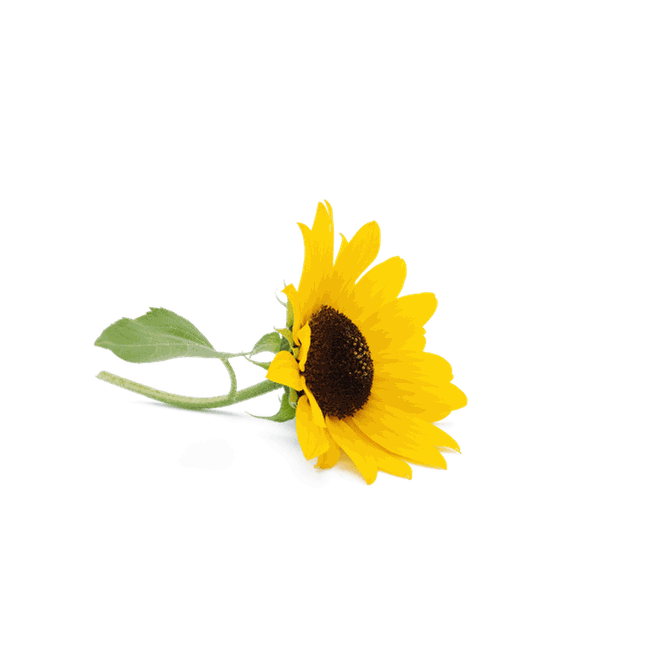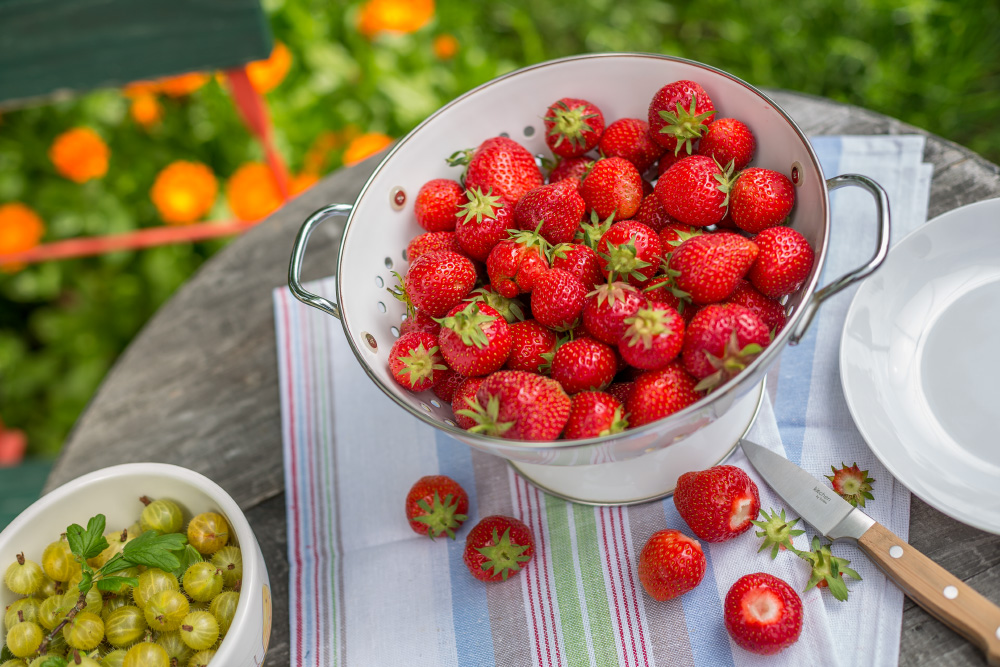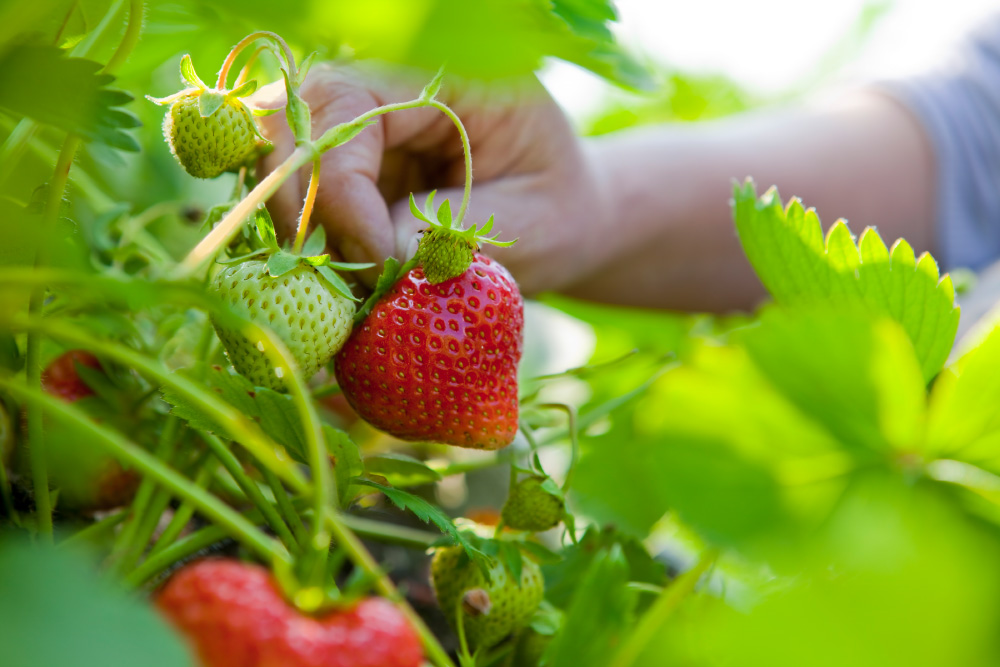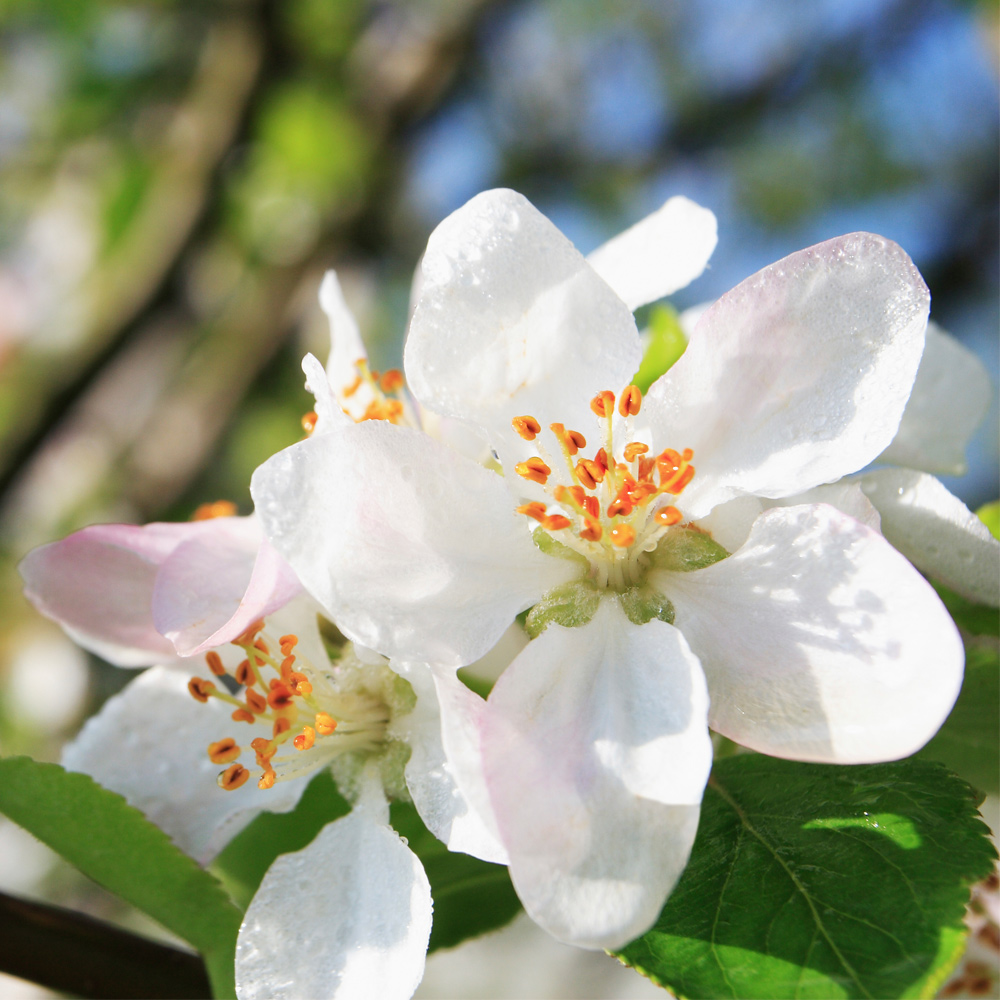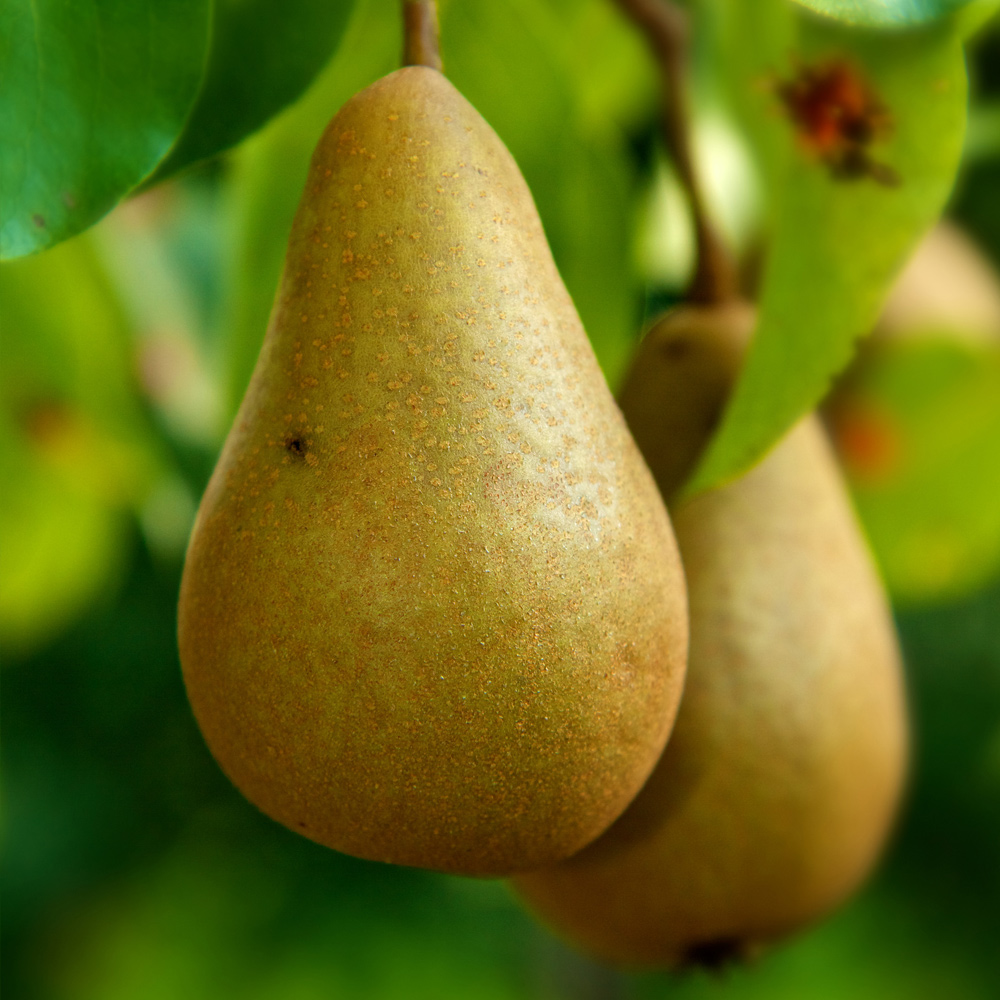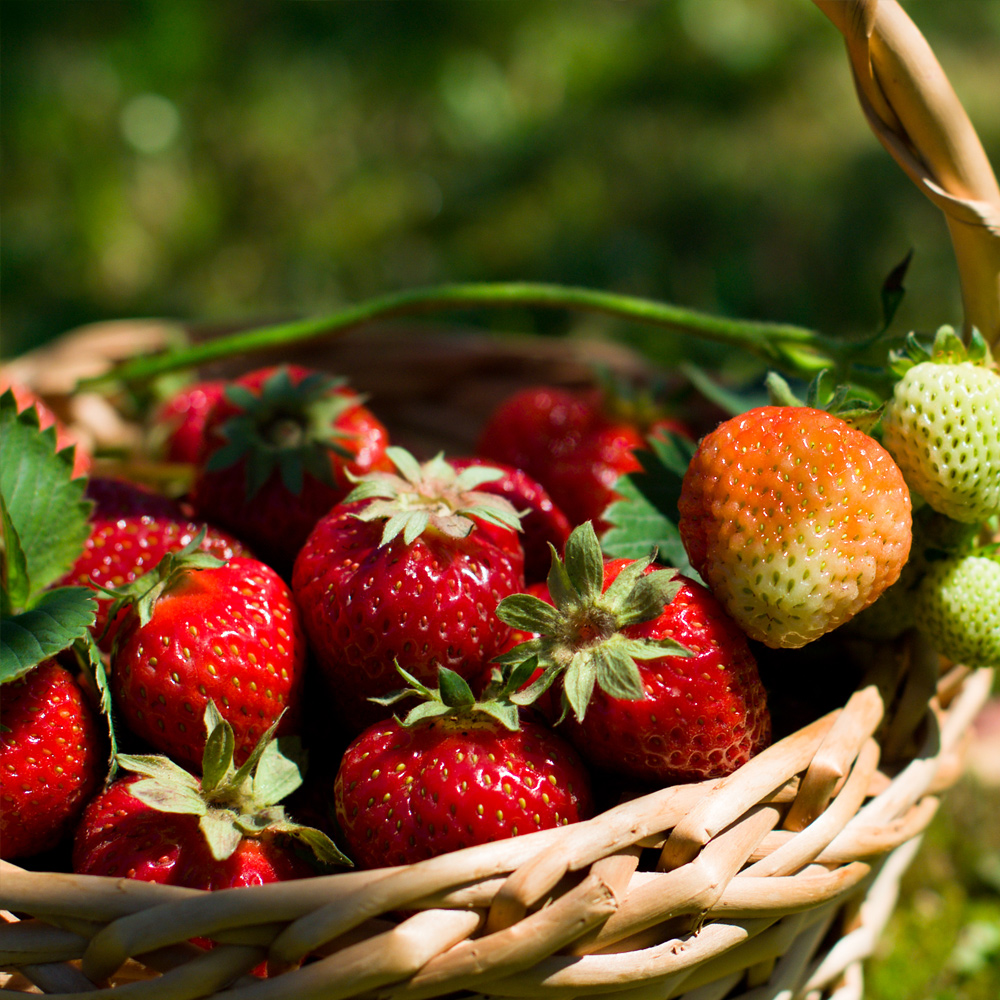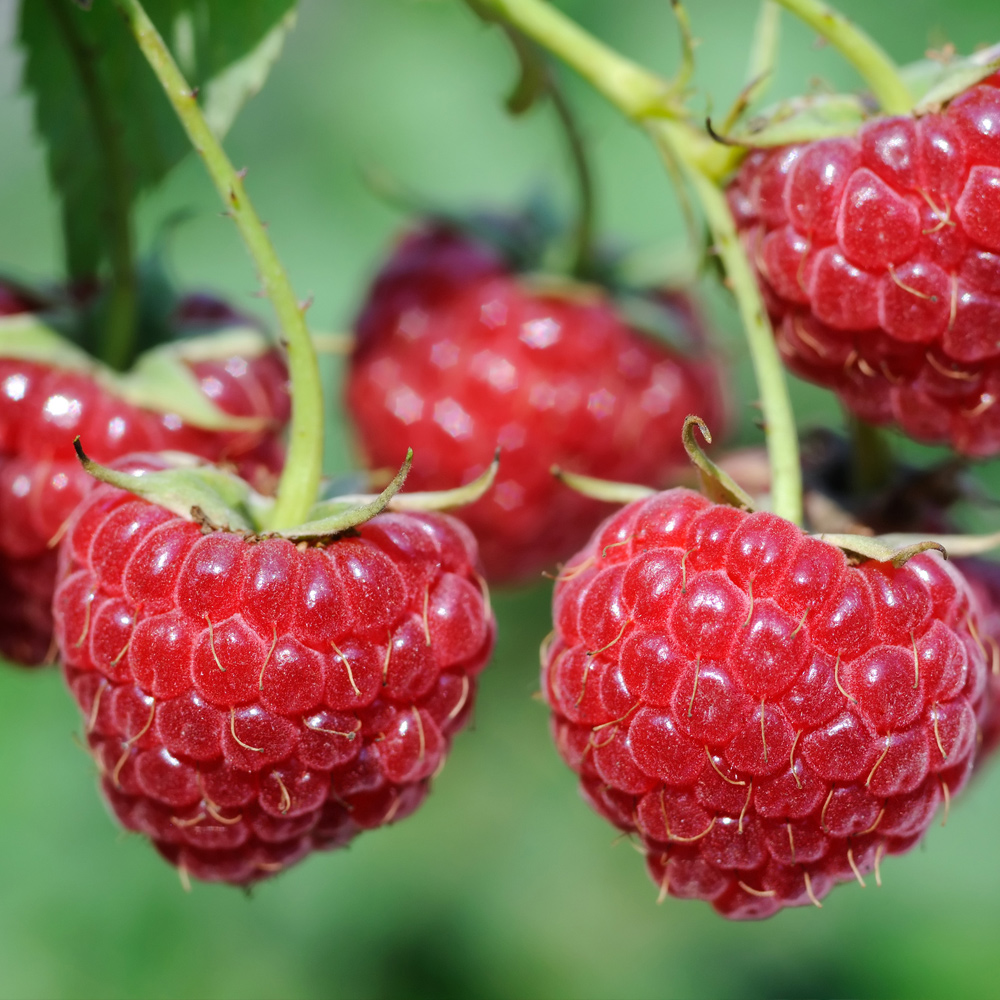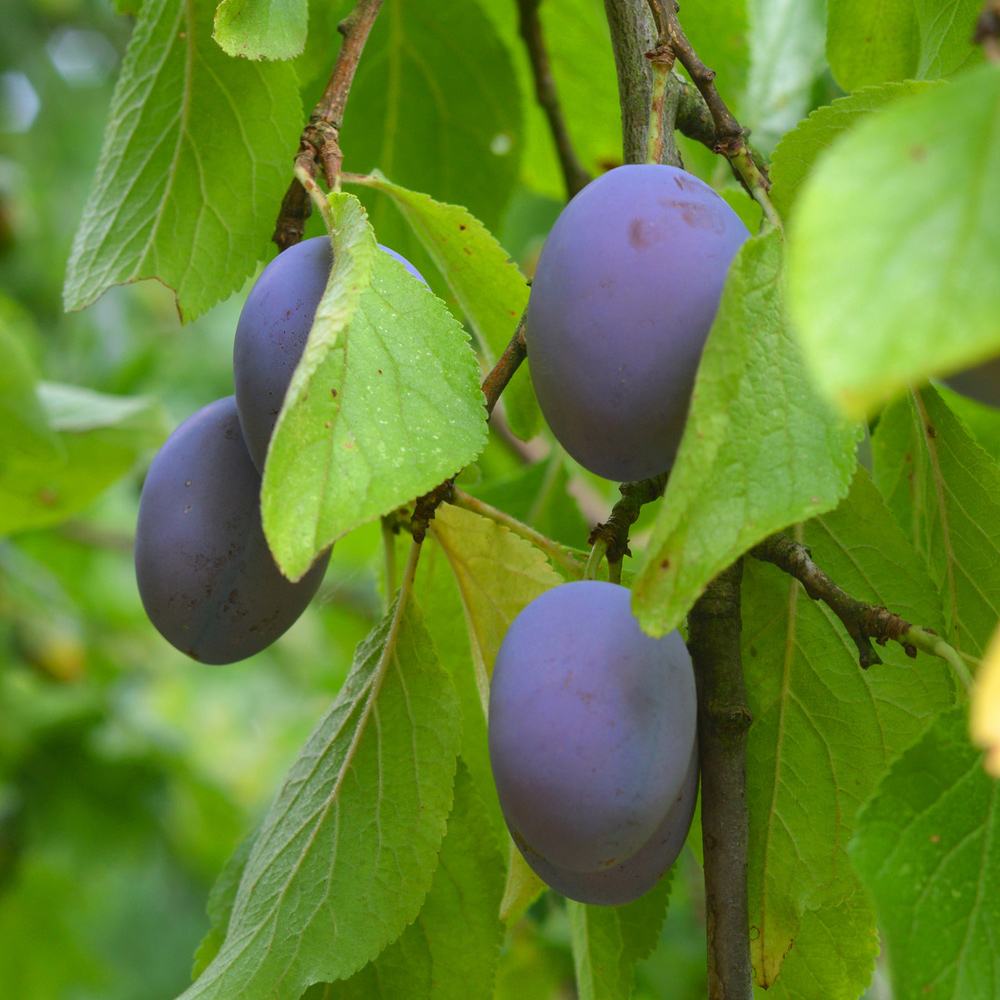Balcony & Patio
Fruit: What you should know
A balcony of sweet fruit – it’s worth it.
A mini orchard on the balcony? Why not, because more and more small slender fruit tree varieties are being sold nowadays. Apple, pear, cherry and plum trees or berry bushes and trees thrive in tubs on the balcony. Plants such as bilberries and strawberries also grow well in boxes and containers. The flowers and later the autumn colours also create a decorative highlight.
Fruit needs sunshine in order to ripen. So a bright, sunny, not too hot, spot on the balcony is suitable for all fruit plants.
Lots of roots, large pot
Small trees, shrubs and standard plants need sufficient space in planters. For a column tree, plan to have a container pot diameter of at least 50 cm. The container should be as high as it is wide. After all, the plants will need to be able to remain there for several years. A climbing trellis (e.g. for kiwis) or a pole is often required to secure the trunk (e.g. for columns or standards) in the pot.
As with all other plants in pots, it is important to have good drainage in the containers. Permanent waterlogging is also bad for fruit. If subjected to constant moisture, the roots rot and the plants are more prone to fungal infections. A hole beneath the tub or box allows excess water or rainwater to quickly drain away. In rainy summers, the plant pots can also be protected under eaves or protective canopies.
For a rich harvest
When planting fruit, make sure to use a peat-free, nutrient-rich substrate specially developed for the needs of trees and shrubs with increased nutrient demands.
With bilberries, however, you should use a soil specially developed for the needs of ericaceous plants. This has a lower pH value, so it is perfect for bilberries.
Later, all fruit trees and berry bushes need several applications of fertiliser such as Organic Multipurpose Plant Food. The liquid Organic Tomato Feed is also especially good for strawberries.
The best time for the first feed is directly when planting in the planting hole. Berries and cherries are given a feed in spring and after harvesting in summer. Apples, pears and plums are fed in spring and in summer, but not after the harvest in August and September. To help them get through the winter – except for berries – give them an application of a potassium-based fertiliser in the autumn.


